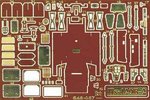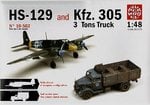lesofprimus
Brigadier General
One plane that I really want to do is the Hs 129B... There is NO 1/32nd scale kits available, why????????????
Retarded industry....
Anyways, It looks like there are 4 kits available...
Hasegawa
Italeri with Opel truck
Revell
ESCI
The esci is reaaaaaal cheap in price... I cant find out much about the kit or company.... Has anyone built ANY of these kits????
Retarded industry....
Anyways, It looks like there are 4 kits available...
Hasegawa
Italeri with Opel truck
Revell
ESCI
The esci is reaaaaaal cheap in price... I cant find out much about the kit or company.... Has anyone built ANY of these kits????


